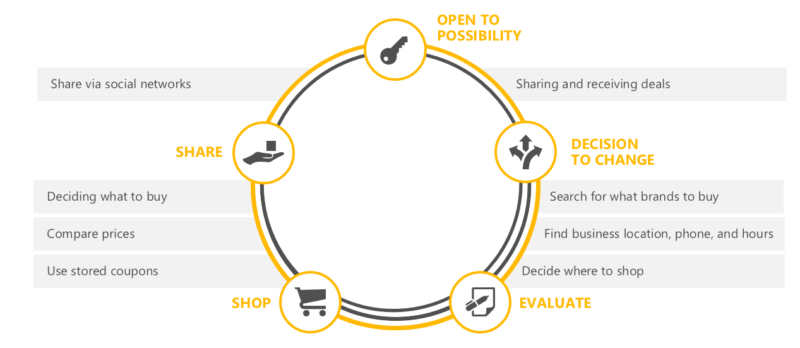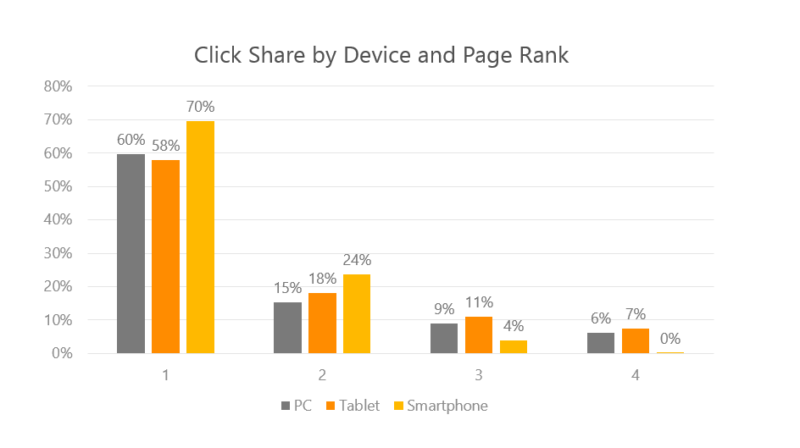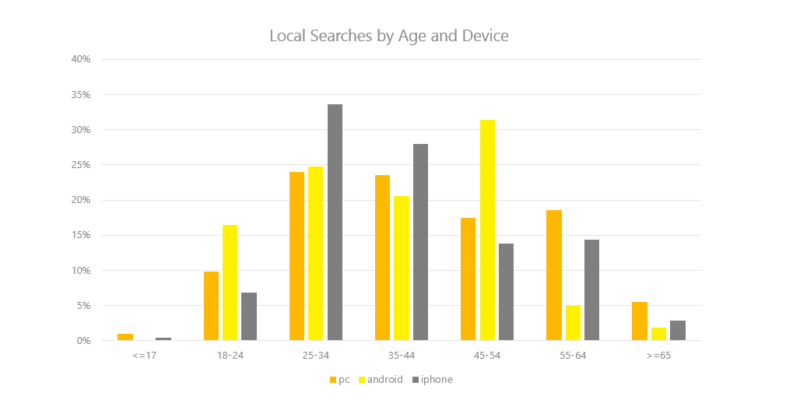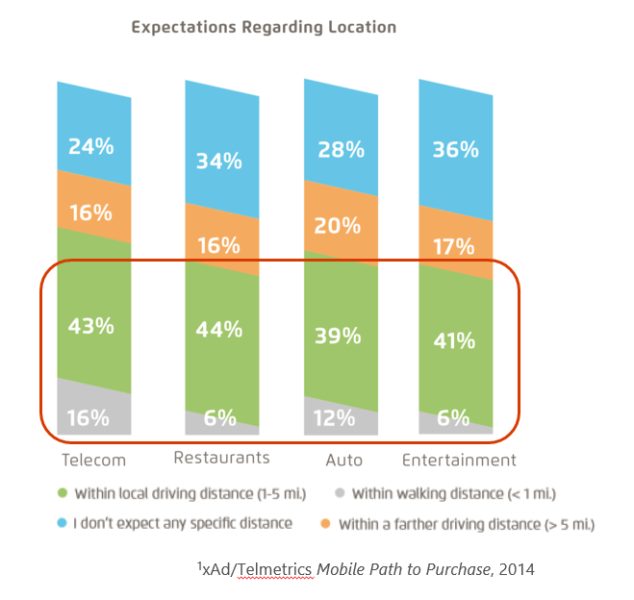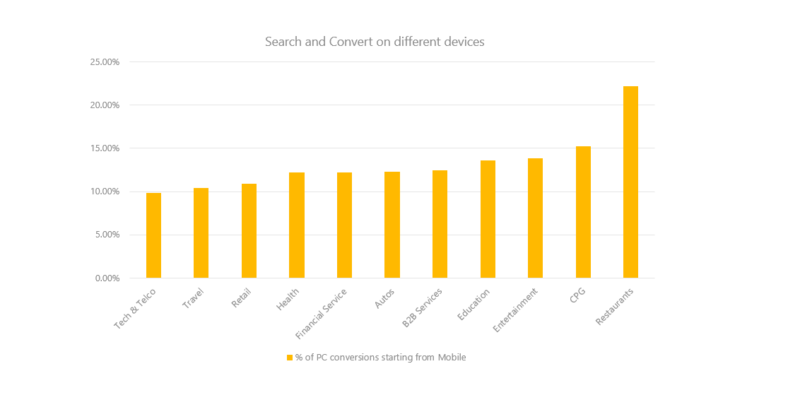9 Facts To Improve Your Mobile Search Performance
Columnist John Cosley of Bing shares insights gathered from internal Microsoft data and other research studies to improve your mobile search ads.
With mobile devices becoming more ubiquitous by the minute, mobile search is playing an increasingly key role throughout the consumer decision journey — for all kinds of purchases, not just last-minute, low-consideration or low-value items.
Here are nine things you need to know about mobile search to help you plan a rock-solid mobile campaign.
1. Mobile Search Plays A Key Role Throughout The Consumer Decision Journey
Microsoft Research and IPSOS conducted in-depth research with mobile consumers around the world to understand how the broad adoption of smartphones and other mobile devices was influencing the consumer’s path to purchase.
What we found was that consumers rely on their mobile devices throughout — from the initial stages all the way through the shopping, purchasing and sharing process.
Even so, consumers are still much more likely to convert, either on their desktops or in-store, using their mobile devices for “upper-funnel” research.
To better understand how consumers search and shop across devices, we tracked 120K users who used same or similar query terms on both PC and mobile within a 30-day window (November 2014).
We found that between 10 percent and 22 percent of PC conversions started on mobile devices. Not surprisingly, the results varied widely by vertical, but all pointed to the importance of mobile search in the path to purchase.
In the example above, the searcher started out looking for a “Nikon d3200 bundle” on their mobile device, then switched to PC to continue their product research.
During Black Friday and in the weeks leading up to Christmas, the user shifted back and forth between PC and mobile multiple times, ultimately purchasing a higher-priced camera body than they had originally searched for.
One important thing to note here is how quickly the user conducted sequential queries and how seamless the flow from PC to mobile is. This illustrates the importance of planning campaigns for cross-device searches and conversions up front, rather than treating PC and mobile devices as completely separate marketing channels.
Consumers expect that advertisers will understand their context, device and prior searches, and then respond appropriately as they move down the purchase funnel.
2. Location Matters
According to Nielsen’s 2014 Digital Consumer Report, 76 percent of mobile shoppers have used a store locator to help them find and visit a local store. Moreover, according to comScore, three out of four purchases resulting from a mobile search actually take place in a physical store.
When it comes to mobile search, “shop local” is the name of the game. Mobile searchers are more likely to search for a local business and are often ready to buy.
Advertisers should factor mobile searches into their ROI calculations to capture the value of mobile searchers who purchase in-store.
3. 70 Percent Of Conversions Happen Within Five Hours Of Mobile Search
The power of mobile search is in its ability to influence a user’s decision in their “mobile moment” — when they are close to the point of purchase. When we look at the average elapsed time between searching and buying, Bing PC users convert in a matter of weeks, whereas Bing Mobile users convert in a matter of hours.
According to a study by Nielsen/Telmetrics/xAd, this shortened conversion cycle reflects the heightened urgency of mobile queries. Mobile users are often in their cars or in a public setting when they are searching for products or retail locations, and they need to get information while they are in transit.
In fact, Microsoft Research shows that more than 30 percent of smartphone users and 25 percent of tablet users want to make a purchase within the hour.
4. Mobile Search Drives Multiple Types Of Conversions
In order to calculate the full ROI of a mobile search campaign, advertisers must also account for cross-channel leads and purchases.
Phone Calls. According to a recent study by Ipsos, almost two-thirds (61 percent) of survey respondents said that “click-to-call is most important in the purchase phase of the shopping process.” Click-to-call and advanced Call Tracking and Analytics from Bing Ads provide advertisers with the insights they need to include leads from phone calls in ROI calculations.
Store Visits and Purchases. More mobile consumers are using their smartphones to facilitate in-store shopping than ever before. While many advertisers originally feared this phenomenon, those fears have proven to be misplaced.
Those who regularly use a mobile device to assist with shopping spend 25 percent more in-store, on average, than those who do not. Additionally, according to a recent study by Google/Nielsen, 93 percent of people who use mobile to research go on to complete a purchase of a product or service.
5. It Pays To Be First
While ad position is a critical factor influencing click-through rate and conversions across all devices, it is especially important for mobile search, where screens are smaller and as few as two search ads are shown.
Looking at this chart, it’s clear that placement below the second position yields very low click share on mobile. To improve your mobile ranking:
- Improve your keyword relevance.
- Improve your ad performance; test to learn what headlines, offers and ad copy work best for your mobile campaigns.
- Use bid modifiers to boost your bids where your ads are particularly relevant.
- Test your mobile site or landing page; make sure it renders properly, is legible, and site functionality works properly (e.g., forms and buttons).
6. Local Searches From Smartphones Outpace PC Across Ages, Up To 55+
At Bing Ads, we see that local searches originating from mobile phones outpace PC-based local queries up to the 55+ category. This means one thing: Make sure that your campaigns and website are mobile-ready.
7. Mobile Searchers Expect Local Results
According to Nielsen’s 2014 Digital Consumer Report, mobile consumers are looking for hyper-local results. They expect results to be within five miles of their location when searching from a smartphone or tablet, and they want to take action immediately.
Unfortunately, very few advertisers target five miles or fewer in their radius targeting.
To capitalize on searchers’ need for hyper-local results:
- Evaluate KPIs for geo-targeted campaigns.
- Test different ad copy and offers for different radius targets.
- For searchers within five miles, promote your location and neighborhood.
- For searchers within a 25-mile radius, try offers like “free local delivery,” “same day delivery” or a promotion that will make it worthwhile to travel a longer distance.
- For searchers farther than 25 miles away, test offers like “free shipping” or “next-day shipping.”
8. Mobile-To-PC Conversion Rates Vary By Vertical
According to Microsoft data, vertical matters in mobile search conversions.
For Tech & Telco, only 9% of PC conversions started from mobile, but 28% of mobile conversions started from PC. PC is used more heavily for browsing for this vertical.
Similar results are seen in the Travel, Financial Services, Entertainment and B2B services verticals.
However, for Restaurants & Foods, 22 percent of PC conversions started from mobile, and 19 percent of mobile conversions started from PC. We found that users are very actively switching devices in their restaurant and food search journey.
9. Mobile-Optimized Ads Observe A 97 Percent Higher Click-Through Rate
For Bing, mobile-optimized ads observe a 97 percent higher click-through rate (CTR) on mobile devices compared with those that are not mobile-optimized. That’s like finding money lying on the ground. Yet sadly, only 11 percent of Bing Ads’ mobile campaigns are mobile-optimized!
With this stat in mind, it’s clear that a little mobile optimization will go a very long way. Here are a few of Bing’s Mobile Ranking Techniques to start you on your way:
- Identify and classify mobile-friendly and device-friendly Web pages and websites.
- Analyze Web documents from a mobile point of view by looking at content compatibility, content readability and mobile functionality (to weed out “junk-like” pages, like those that are 404 on mobile or Flash only).
- Optimize your campaigns for mobile, and you’re already beating 89 percent of your competition!
Opinions expressed in this article are those of the guest author and not necessarily Search Engine Land. Staff authors are listed here.
Related stories

